

Photo Album
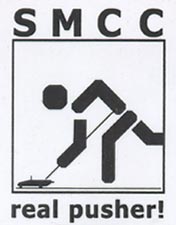 |
'Real Pushers' |
 |
As many have found, even at Buckminster, pushing off a tethered car is not always as easy as it looks. Small diesels definitely requires a technique that is alien to some, but starting a FEMA car is relatively easy, although the bigger they are, the more pudding they need. There is a minor complication though, clockwise running is natural for right handers, whilst lefties find anti clockwise more natural, but with cars needing to be run in either direction, both will have to adapt.
Not everyone uses a push stick as illustrated below. Some chose to push the car like a large dinky toy, either facing the direction of travel, or underarm. Here we see the varied techniques used. What has to be remembered is that the person pushing the car is not always the competitor as they might well be horsing, or in some cases, not able to get off the track too nimbly.
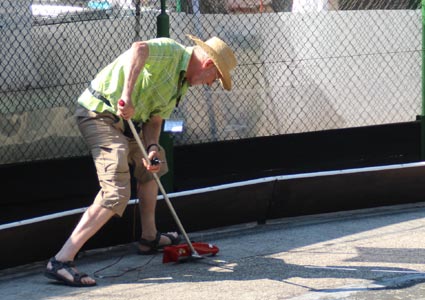 |
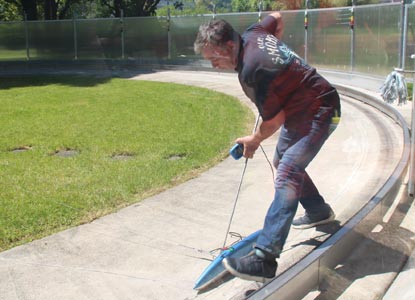 |
| Christian Schmutz 'proxy pusher' | Charlie Murphy well ahead of his 10cc |
For the right hander you will see that the right foot is alongside the car but for left handed David the lead foot is behind the car and cable. David ran 3Bs for many years that run ACW, far more natural for him.
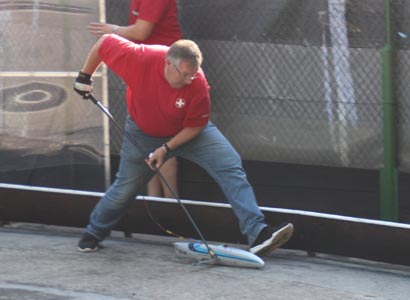 |
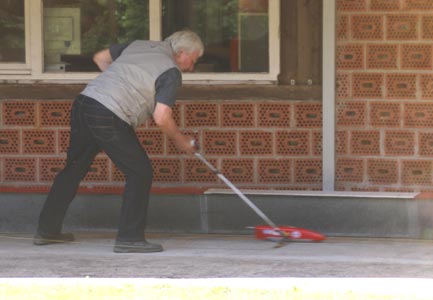 |
| Christoph Zaugg gives his 10cc some wellie | David Giles with his Class 3 |
Remarkably it was only recently that a rule was introduced making it mandatory for those pushing off to wear appropriate foot wear, no flip flops, crocs, slippers or sliders.
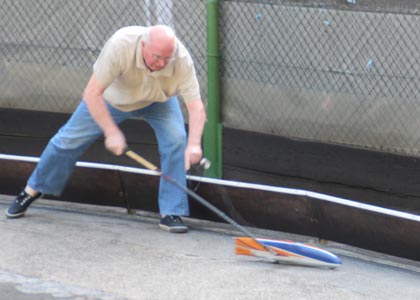 |
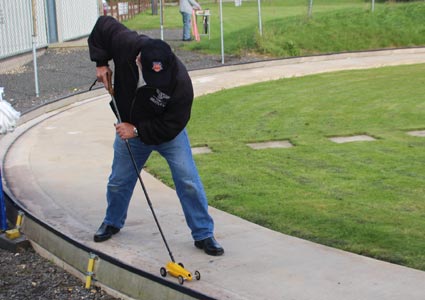 |
| A long push from the late Dieter Hecht | Lyndon Bedford with Jan's diesel |
For a long while on-board batteries were very popular and are still used in some of the smaller classes, but now most use a cell held in the hand with clips on the plug and tether arm, that come off as the car gets under way (hopefully). Leads taped to the cell usually avoids them following the car round the track. A very steep learning curve if not? Dave L below used a remote battery and remote battery holder, just hope he holds on?
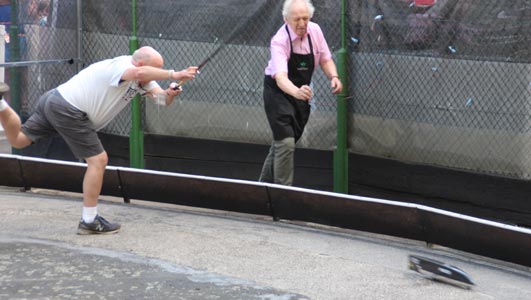 |
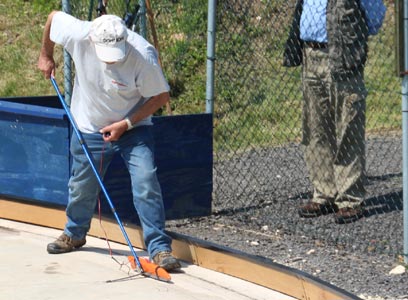 |
| The spectacular Dave Lundegaard 'flyer Paul Otto on battery duty | Oliver Monk with Aaron's E1 1.5 at Buckminster |
Having progressed through the classes from a 1.5cc it was finally time to give the newly built 10cc a run at Witterswill. Oh dear. the car did not move an inch as I departed over the top of it and down the track. Soon learned that the bend in Christoph's and Maggie's sticks is what is needed to get a ten away.
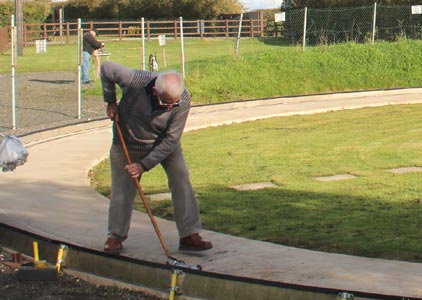 |
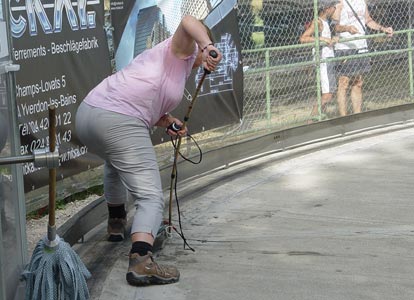 |
| John using a forked stick to push on the axles of a twinshaft | Look at the bend in Maggie James' push stick |
Diesels are a another thing entirely as some react to a FEMA type push, whilst others show not an inclination to start without a much longer push. It was common in the day to run with the car and the engine popping and then give it a final push to get it away. One car was particularly reluctant to start at Buckminster no matter who tried until a guest stepped in, never having started a car before. He pushed it gently so it was popping and then off it went, much to his and everyone else's amazement.
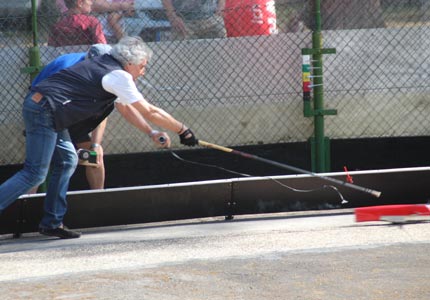 |
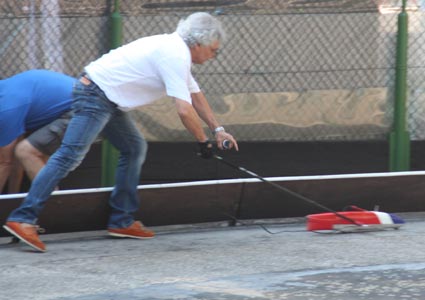 |
| Michel Duran, another long pusher | And for Danielle's car |
Most of the
photos were taken at Hannover where it was possible,
with the help of a step ladder to see over the
safety fence. No 'burst' photography, just luck in
pressing the button at roughly the right moment
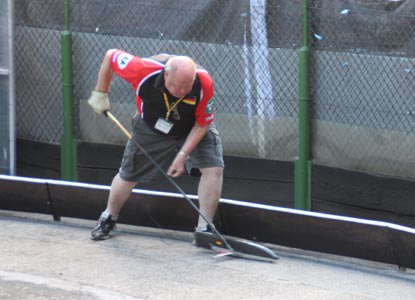 |
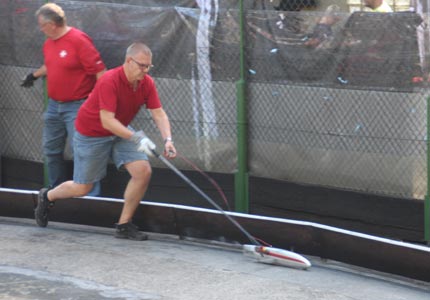 |
| Horst Denneler 10cc | Peter Arlautzki chases his 10cc |
As the cars are 'horsed' there is time to step off the track and make it back to the driver's refuge. However, as you are allowed three minutes to commence your run it is possible to stop the car up to three times and make adjustments, or if it does not get away at all or is reluctant to come up, then restarts are possible. As the car might stop anywhere on the track though, it can involve some swift running to get back from the far side before the timing can start with the car almost up to full speed before you make it back. Tends to concentrate the mind somewhat.
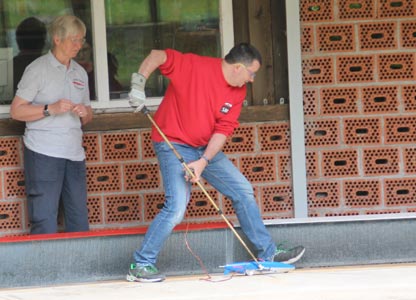 |
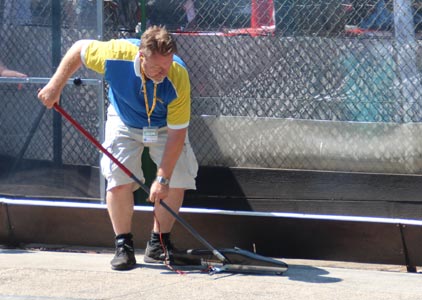 |
| Philipp Meier well ahead of the 1.5cc | Rickard Hellander just gives it a shove |
There is a
wonderful contrast between standing up to your waist, or
higher, in water holding two ends of a wet and oily
starting cord and trying to persuade a motor in to life,
whereas exactly the same motor in a car starts with the
most apparent ease with just a gloved hand. They can
also be stopped with the same gloved hand on the wheels,
although it does require a confident grip, probably the
most lasting impression from our very first
international tethered car meeting.
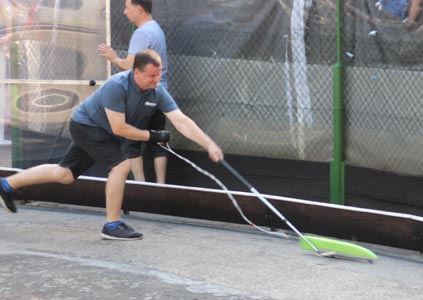 |
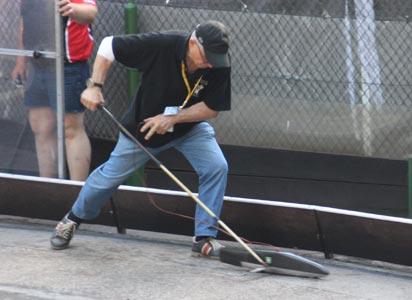 |
| Tonu Sepp, the long left hand push | Walter Roder one handed |
ęcopyrightIndividualContributors2025